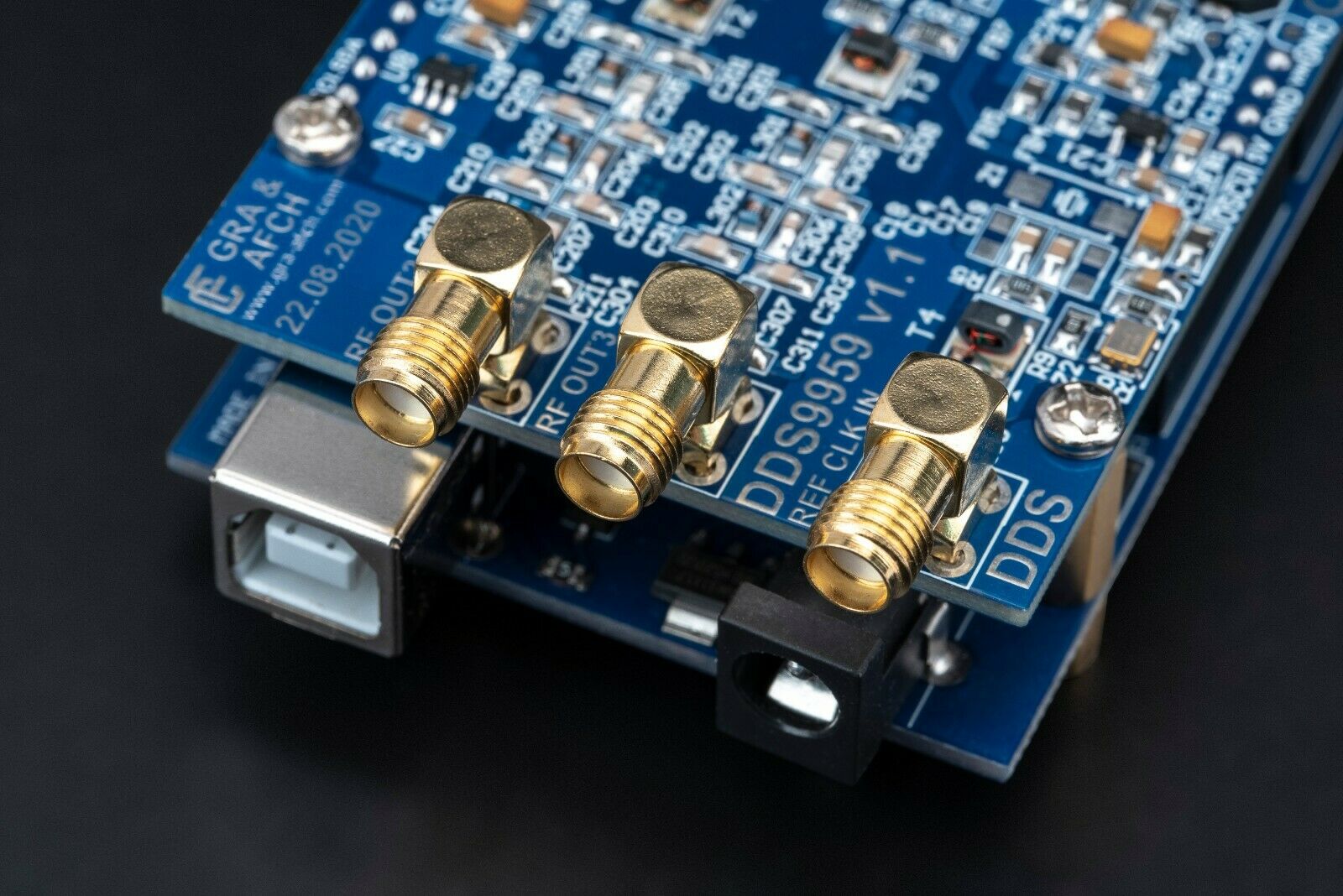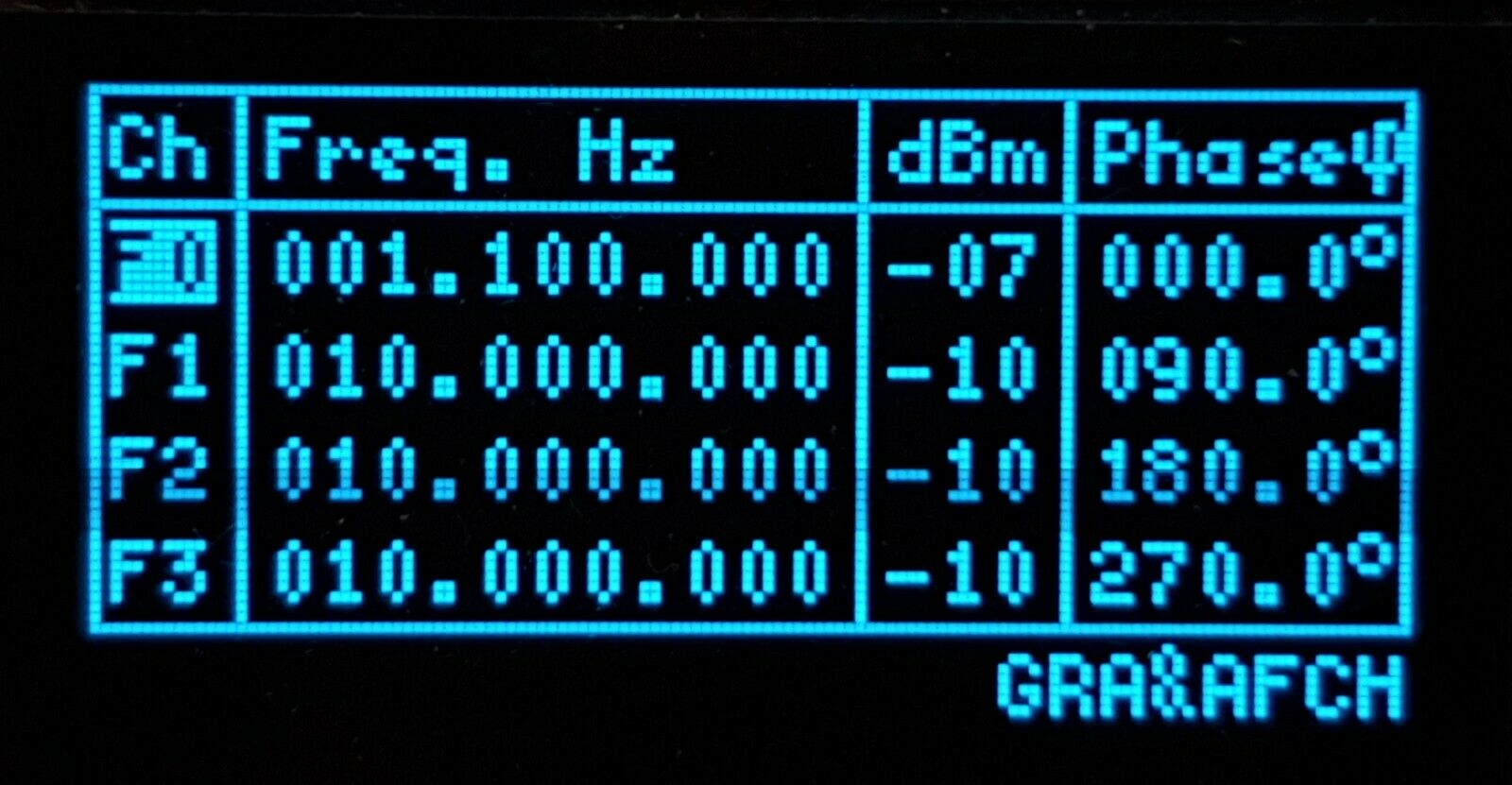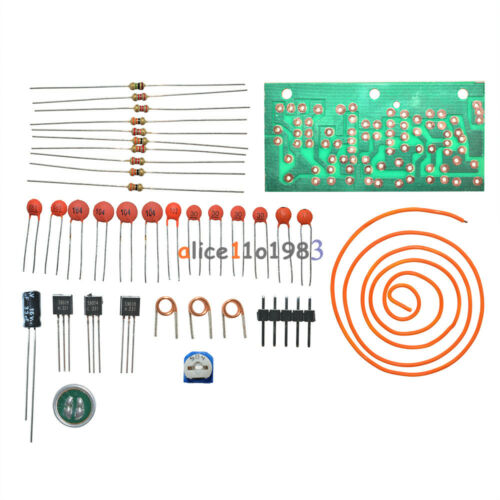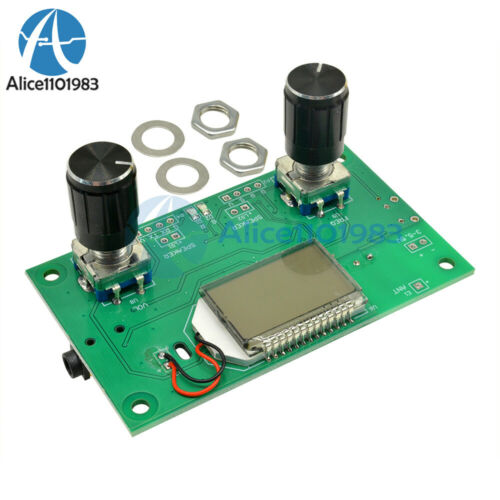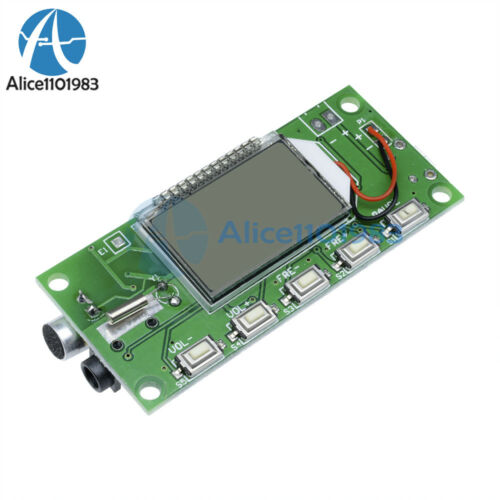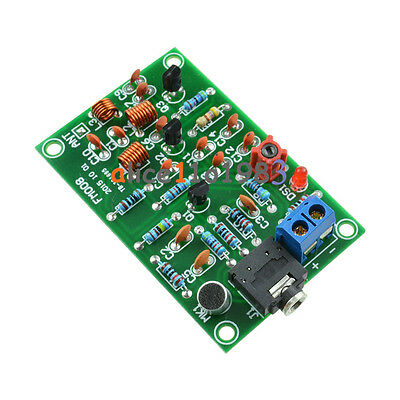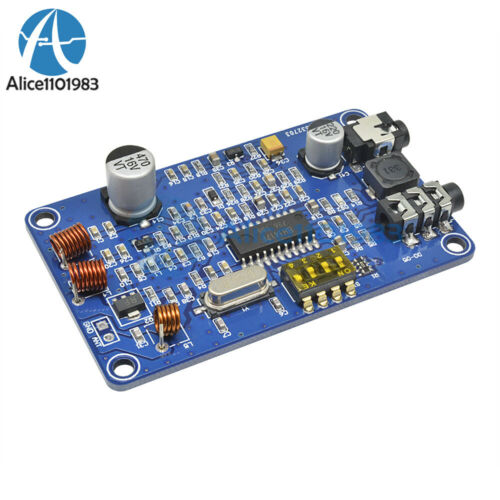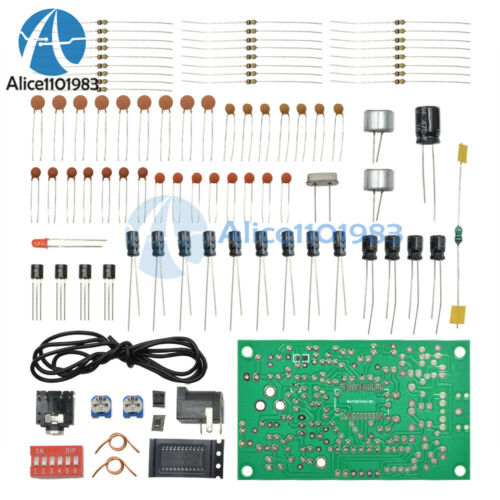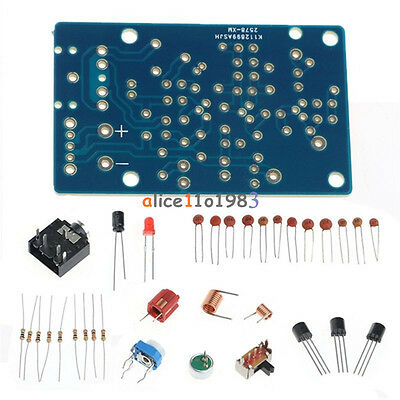-40%
DIY KIT DDS AD9959 Shield RF Generator 4 Sync Channels 225MHz @600MHz NO ARDUINO
$ 100.29
- Description
- Size Guide
Description
DIY KIT for DDS AD9959 Arduino Shield RF Signal Generator4 Synchronized Channels
225MHz @600MHz Core Clock
Low spurs Low Harmonics
DIY KIT for DDS AD9959 Arduino Shield RF Signal Generator
DDS (Direct Digital Synthesis) Analog Devices AD9959 Arduino Shield by GRA & AFCH
Easy connection to Arduino MEGA 2560 without additional wires and converters
All functions of the DDS AD9959 are brought to the contacts of the Arduino MEGA
With this you can fully reveal all the capabilities of the DDS AD9959 Shield
Opensource Software available on our GitHub repository: github/afch/DDS-AD9959-Arduino-Shield
Video review on our YouTube channel: youtube/watch&v=HpigQwjc9mg&feature=youtu.be
Listing includes:
AD9959 DDS Shield Board Bare PCB
Set of Parts and Components (Electronics, Screws, Nuts, Spacers)
OLED Display (
included
, with the Shield Board)
Clock Chip (
included
, TCXO chip)
Principal Electrical Scheme for AD9959 Shield Board v1.1
BOM List of Parts and Components for AD9959 Shield Board v1.1
We recommend to use RF Amplifier and Low Pass Filter with our DDS Shield Boards:
RF Amplifier LNA 8-2000 MHz, GAIN = 20 dB, P = +20 dBm + LDO MMIC MRFA89 SOT-89
https://www.ebay.com/itm/184629327037
Low-Pass Filter LPF 7th Order Elliptical 1-1000Mhz 3.5 7 14 28 144 433MHz etc.
https://www.ebay.com/itm/184877243792
AD9959 DDS Shield requires 4 Amplifiers and 4 Low Pass Filters for each channel!!!
Key Benefits:
Convenient and fast control with an encoder.
4 synchronized DDS channels 225MHz @ up to 600 MSPS
Low harmonics no more than -60 dBc. An output RF transformer is used for the correct operation of the current mirror.
Small spurs.
4 layer board. Signal lines TOP and Bottom, inner layers Ground and Power.
Low Noise LDO Stabilizers.
Separate power supply for all analog and digital lines (1.8V and 3.3V), 5 pcs IC voltage stabilizers are used. Additionally, there is an RF Ferrite bead interchange.
High-speed decoupling Level converter and TTL 5V matching.
Types of possible reference oscillators (choose one of them in the selector):
XO – Crystal 25 MHz 20 ppm internal oscillator with PLL up to 600 MHz.
TCXO – 40MHz (Supports 10 – 50 MHz) 1 ppm external oscillator PLL up to 600 MHz.
REF CLK IN – external reference clock input, up to 600 MHz. (this source is NOT INCLUDED).
Features:
At the output of each channel is a transformer to reduce even harmonics.
Additionally balancing transformer is used for XO, TCXO and REF CLK IN options.
Easy to connect OLED display.
Device control with one encoder and one button.
The synthesizer is capable to generate sine wave.
The software allows you to select and configure the frequency of the clock generator through the user menu (without the need to recompile the program).
Any settings can be stored in non-volatile EEPROM memory (located at Arduino Mega).
Basic settings are applied and saved automatically.
This shield support overclocking the AD9959 core up to 600 MHz
.
DDS AD9959 Shield has ability to generate a signal up to 225 MHz with a core overclocking up to 600 MHz (to suppress harmonics, it is recommended to overclock the AD9959 for frequencies above 200 MHz).
Phase Noise
This parameter is very important and interesting for those who buy DDS.
Since the intrinsic phase noise of DDS is obviously less than that of PLL generators, the final value is highly dependent on the clock source. In order to achieve the values stated in the datasheet on AD9959, when designing our DDS AD9959 Arduino Shield, we strictly adhered to all recommendations from Analog Devices: PCB layout in 4 layers, separate power supply of all 4 power lines (3.3 V digital, 3.3 V analog, 1.8 V digital, and 1.8 V analog). Therefore, when buying our DDS AD9959 Arduino Shield, You can focus on the data from the datasheet on the AD9959.
Figure 18 shows the noise level when using the built-in PLL in DDS. The PLL multiplies the frequency of a 25 MHz generator by 20 times. We use a frequency – 40 MHz (x12 Multiplier) or 50 MHz (x10 Multiplier) from TCXO which gives even more stability.
And figure 16 shows the noise level when using an external reference clock 500 MHZ, with the PLL off.
Comparing these two plots, for example, for Fout = 40.1 MHz and the internal PLL turned on at 10 kHz carrier offset, the phase noise level is -127 dBc @ 10 kHz. And with the PLL off and using external clocking, the phase noise is 155 dBc @ 10kHz. That is, when using an external clock phase noise by 28 dBc better (lower).
For the same frequency Fout = 40.1 MHz, and the internal PLL turned on at 1 MHz carrier offset, the phase noise level is -130 dBc @ 1 MHz. And with the PLL off and using external clocking, the phase noise is 160 dBc @ 1 MHz. That is, when using an external clock phase noise by 30 dBc better (lower).
Conclusion: when using external clocking, You can get much lower phase noise than using the built-in PLL. But do not forget that in order to achieve such results, increased requirements are put forward to the external generator.
OLED Display Menus:
Main Screen
Core Clock Setup Menu
Dear Customers!
If you have ANY questions, PLEASE ASK US
Specifications:
Frequency:
100 kHz – 225 MHz (@600 MHz Core Clock) in 1 Hz step
Spurs max:
-60 dBc
Frequency step:
1 Hz
Output power:
-7 dBm to -60 dBm (on 50 Ohm load)
Output level up to:
0.282 Vpeak-to-peak (at -7 dBm)
Power Supply:
USB or External Power Supply 5 – 7V DC 1A
Output filter:
7-th order
Phase range:
0 to 360 Degrees in 0.1 Degree Step
Reference clock sources (on choice):
XO-Crystal Oscillator, TCXO 1ppm Oscillator, or External Oscillator up to 600 MHz
Size:
53.26 x 102mm
DDS AD9959 Arduino Shield Spectrograms:
GRA & AFCH DDS AD9959 Shield External Clock Source VS Internal Clock Source Comparison:
DDS AD9959 100 kHz Marconi 2023@600MHz VS TCXO 40 MHz x12@600 MHZ
DDS AD9959 10 MHz Marconi 2023@600MHz VS TCXO 40 MHz x12@600 MHZ
DDS AD9959 100 MHz Marconi 2023@600MHz VS TCXO 40 MHz x12@600 MHZ
DDS AD9959 225 MHz Marconi 2023@600MHz VS TCXO 40 MHz x12@600 MHZ
GRA & AFCH DDS AD9959 Shield Oscillogram:
DDS AD9959 All 4 Channels Outputs Shifted on 90 Degrees.
Arduino MEGA to Shield AD9959 Pinout Scheme:
Block Scheme DDS AD9959 V1.1
DDS Arduino Shield AD9959 RF Signal Generator Overview:
Please refer to full video Overview of our DDS AD9959 Shield RF Signal Generator on our YouTube channel: 'GRA & AFCH'
DDS Arduino Shield AD9959 RF Signal Generator:
Dear Customers!
If you have ANY questions, PLEASE ASK US
Shipping and Return information
All Items are shipped from Ukraine
Via International registered Airmail
Shipments are made within 1 business day
After the payments are received and verified
It takes about 4-7 days via UPS Express delivery
It takes about 10-18 days via Standerd shipping
It takes about 35-45 days via Economy shipping
We combine multiple Items to save on shipping
UPS Express Shipping time (recommended):
Europe:
3-5 days
Germany:
3-5 days
USA, Canada:
4-7 days
Asia, South America:
5-7 days
Australia, New Zeland:
5-7 days
Africa, Central America:
5-7 days
Standard Shipping time:
Europe:
10-12 days
Germany:
10-12 days
USA, Canada:
10-15 days
Asia, South America:
10-18 days
Australia, New Zeland:
12-18 days
Africa, Central America:
12-18 days
Economy Shipping time:
Europe:
25-30 days
Germany:
25-30 days
USA, Canada:
30-35 days
Asia, South America:
35-45 days
Australia, New Zeland:
45-55 days
Africa, Central America:
45-55 days
Return Policy
All Returns are accepted
For Return you should contact Us within
14 Days
after receiving the Item
Refunds are made as Money back or Replacements (buyer’s choice)
Return shipments are paid by the buyer
No restocking fees are charged
Dear Customers!
If you have ANY questions, PLEASE ASK US



